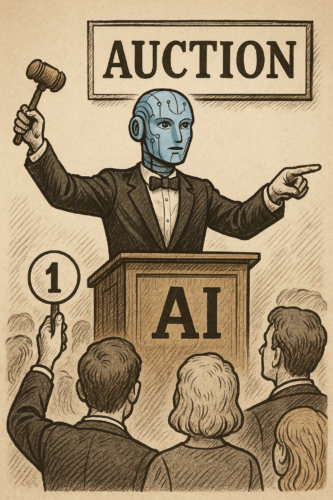
How AI is Revolutionizing Paid Search Advertising
The emergence of AI has shifted the paid marketing landscape in several ways – from automated “smart bidding” strategies to dynamically or even automatically created
The past five weeks marked a new inflection point in AI. OpenAI went full agentic with Agent Builder and in-chat commerce. Anthropic fortified enterprise AI with Claude 4.1. Governments worldwide scrambled to regulate, while generative video, fashion AI, and job disruption debates defined headlines. Below is a full-spectrum view of everything CMOs and innovators should know heading into Q4.
Test In-Chat Commerce with the Agentic Commerce Protocol (ACP): Activate ACP for your Shopify or Etsy store to enable instant checkout directly within ChatGPT.
OpenAI’s October DevDay introduced Agent Builder — a visual, drag-and-drop workflow creator that lets users design multi-agent systems. The platform integrates with Gmail, Calendar, and dozens of new apps via the ChatGPT Apps SDK, allowing tools like Spotify, Zillow, and Canva to embed directly into conversations.
Paired with the Agentic Commerce Protocol (ACP), users can now purchase directly from Shopify and Etsy merchants inside ChatGPT. The stack effectively transforms ChatGPT into a conversational operating system for business automation and sales.
Claude 4.1 rolled out with a 1M-token context window, enhanced coding ability, and tighter integration into Microsoft Copilot and VS Code — displacing GPT-5 in some enterprise stacks. Anthropic also expanded its government-grade access program ($1 entry-tier) to meet compliance standards.
Gemini 2.5 Deep Think proved elite in reasoning and coding (ICPC 2025 gold medal) while powering viral multimodal creativity like the Nano Banana meme, which generated over 200M AI images. Chrome AI now integrates Gemini directly for contextual search and creative assistance.
Elon Musk’s xAI secured a $10B raise at a $200B valuation to accelerate Grok 5 — a next-gen reasoning model with NSFW image/video generation and early AGI goals. Musk teased plans for a full AI-generated game and film by 2026.
OpenAI’s Sora 2 upgrade introduced synchronized audio, multi-shot continuity, and consent-based realism controls. It brings cinematic-grade output into consumer hands and raises ethical questions about authenticity and licensing.
Agent Builder enables multi-step marketing flows (e.g., research → design → approval). MCP connectors automate routine email, data, and calendar tasks — effectively building small “marketing departments in chat”.
ACP now supports instant checkout for Shopify, Etsy, and soon DoorDash and Uber. Stripe handles backend payments; OpenAI open-sourced the protocol for industry-wide adoption. Conversion rates are already up 15–30% for beta testers.
Gemini’s multimodal reasoning, Claude’s enterprise reliability, and Sora’s realism mean brands can ideate, iterate, and deploy entire campaigns across text, image, and video — all within a single AI loop.
California passed SB-53, requiring safety documentation, incident reporting, and whistleblower protections for frontier model developers. It’s being hailed as a potential blueprint for national AI regulation.
The European Commission launched a €1 billion fund to boost AI sovereignty in defense, health, and manufacturing.
A Senate report warned AI and automation could cut up to 100 M U.S. jobs this decade, igniting discussions around profit-sharing, robot taxes, and four-day workweeks.
Security researchers raised alarms about autonomous AI agents capable of discovering and exploiting unknown vulnerabilities — a shift from human-directed hacking.
A proposed Anthropic copyright settlement was rejected by a federal judge, reinforcing the industry’s uncertainty around dataset ownership.
September wasn’t just a busy month — it was the moment AI stopped being a tool and became an ecosystem. The platforms are building economies inside chat, while regulators race to define the boundaries. The smartest brands aren’t waiting for clarity; they’re learning by building.

The emergence of AI has shifted the paid marketing landscape in several ways – from automated “smart bidding” strategies to dynamically or even automatically created

While AI offers clear advantages, marketers should be mindful of challenges and limitations: Loss of Control and Transparency: One common concern is the “black box”

AI and machine learning in paid advertising has changed the landscape in so many ways, including streamlining processes and eliminating unnecessary manual tasks. That being